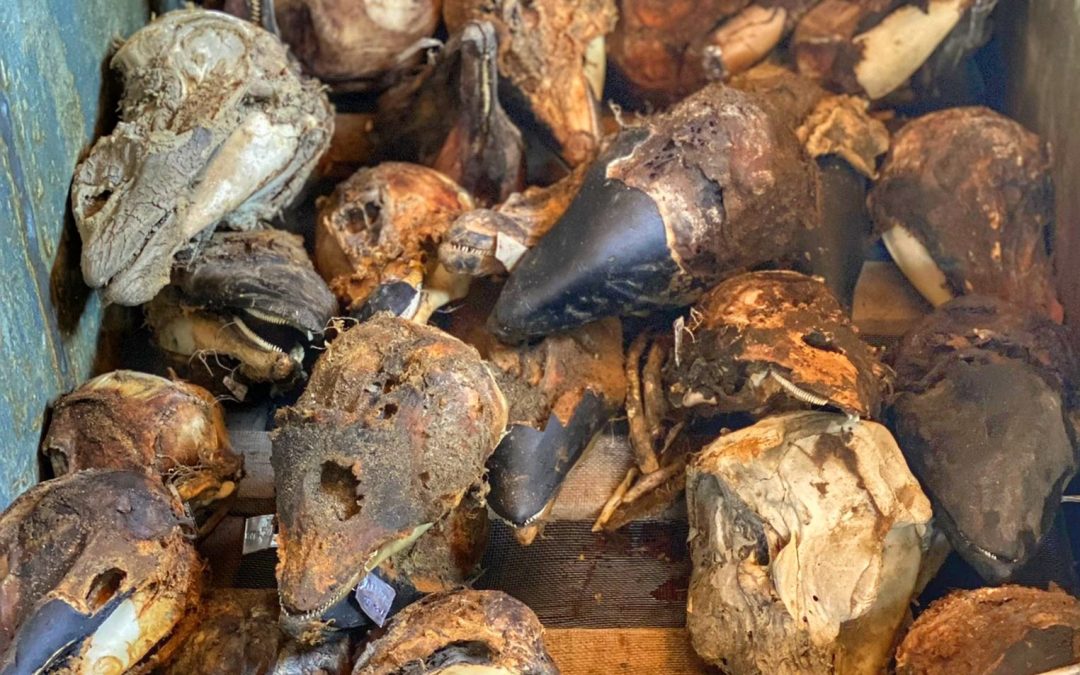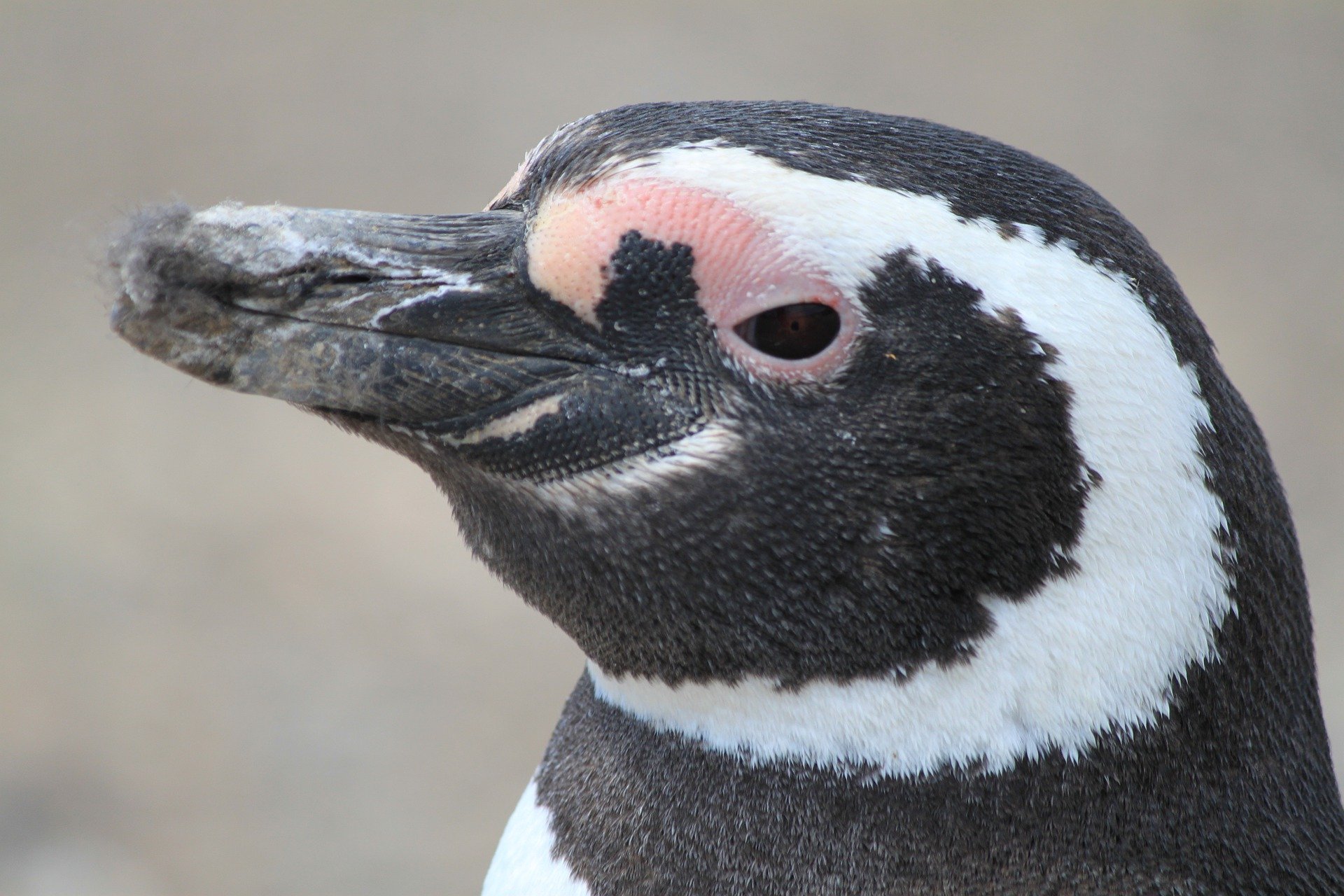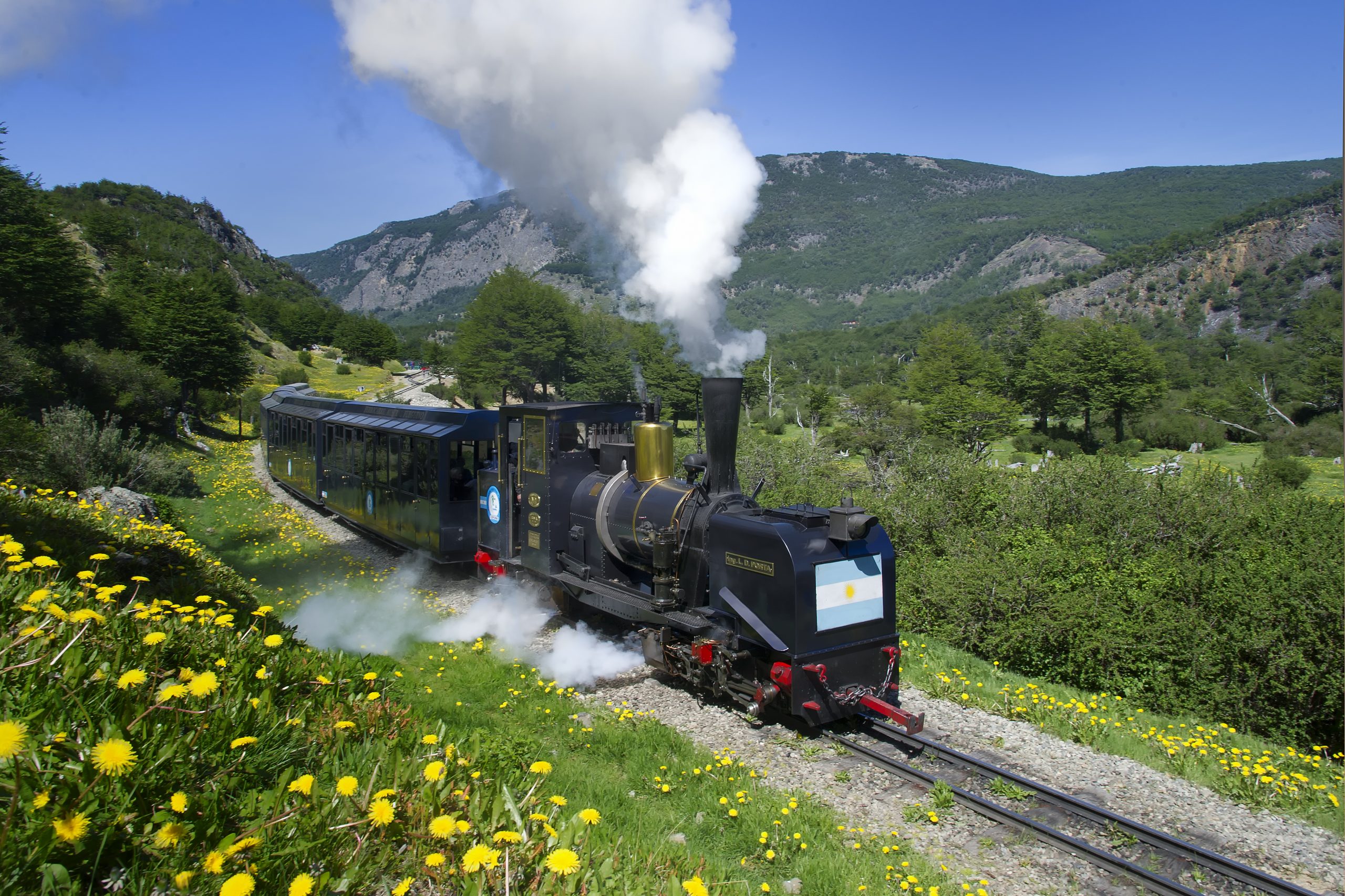Skulls, bones and rotting flesh weren’t in the original itinerary when we were planning our journey south. But they were a surprisingly fascinating addition to our trip when we booked a Walk with Penguins tour in Ushuaia and made a quick stop at Museo Acatushún on the Harberton Ranch.
The museum was built – and filled – by Natalie Prosser Goodall, a farm girl and botanist from Ohio who married Thomas Goodall and spent many years engrossed in the local environment, wildlife and plant life. In 1978, when a road was built to connect the ranch to the Pan American Highway, Natalie seized the opportunity to reimagine Estancia Harberton as a tourist destination, opening a teahouse and offering tours in the summer, including the aforementioned Walk with Penguins tour, the rights for which she leased to local tour companies.
Once all of that was established, Natalie applied for a grant from an oil company to construct Museo Acatushún close to the location where she cleaned and examined the bone specimens she found. The museum was built in 2001 and funded by the money Natalie made from the tour companies who ran trips to Isla Martillo.
And so it was that we found ourselves at Museo Acatushún. After a horribly bumpy journey of one hour and ten minutes from Ushuaia, I was extremely grateful to get out into the cold, fresh air of Harberton Ranch for a few minutes, before entering the museum to take a look around. There were many species of whales, dolphins, seals and other sea mammals arranged on the walls and in the centre of a large room, with skulls of other animals also on show.
Our tour guide was a student who, as part of her college course, was working at the museum, cleaning the bones of various sea mammals that were found and given to the museum. She even brought us to her “office” and showed us where she cleans the bones with nothing more than soap and a toothbrush, just as Natalie had done before her. Time-consuming work, but rewarding for someone as passionate as she is. She warned us of the smell before we entered the “bone-house” and it wasn’t too bad when we first walked in – a small mercy for someone suffering from motion sickness from the ride over.
But, when she brought us to the back of the little shack and opened a large wooden box to show us its contents, it was a whole other ballgame. The stench of rotting flesh hit us like a slap in the face. At first, I held my breath, not wanting to vomit but, coming from rural Ireland, where you learn to just embrace the smell of slurry in the summer months, I realised I’d have to suck it up – or suck it in. I would rather embrace this stench than step outside and miss out on nuggets of fascinating information about her work.
Within the box, was a large assortment of skeletal remains – skulls and bones of dolphins, seals and other sea mammals. These had not yet been cleaned and so there was a lot of rotting flesh still clinging to the bones. It reminded me a little bit of the shark museum in Iceland, where shark meat was hung to ferment. That, too, had a bad odour – though perhaps nowhere near as awful as this. Each skeleton, we were told, is taken apart and the bones are cleaned one by one – with soap and a toothbrush. They are then reassembled to display in the museum’s impressive showroom.
This was a really fascinating and unexpected addition to our tour. The museum is run by volunteers and receives no major funding from the government or other scientific bodies in Argentina, despite the highly important and valuable work they do. But there is a tip jar and every little helps.
Following our brief stop at the museum, we hopped on a boat to Isla Marillo. If you haven’t yet read about the penguins, you can check it out here.
On our return to the ranch, we listened to a very interesting talk on the founding of the ranch by Thomas Bridges who, according to legend, was found, abandoned in Bristol at the age of two. He was named Thomas, because there was a T embroidered on his clothing, and Bridges, because he was discovered wandering alone on a bridge.
Thomas later became a missionary pioneer and, following his resignation from the Anglican Mission at Ushuaia in 1886, established the ranch and became the first white man to live permanently in Tierra del Fuego. He named his home Harberton Ranch after the hometown of his wife, Mary Ann Varder from Devon, England, so that she could have a little bit of home with her always.
There is a lot more on the history of Thomas Bridges, his missionary work in Ushuaia and the effect it had on the surrounding area at Historia Fueguina, an educational museum that guides visitors through the region’s history with scenic dioramas of people and objects.
Bridges’ son, Lucas Bridges, later wrote ‘The Uttermost Part of the World’ which, coincidentally, was the book that prompted Natalie to hop on a plane and travel south to see Harberton Ranch for herself. It was there that she met Thomas Goodall, a grand-nephew of Lucas. While the Bridges name has been married out of the family, there is a Thomas in every generation. Thomas Goodall is the current manager of the Harberton Ranch since the death of his wife, Natalie, in 2015. He runs the ranch with their daughter and her children, meaning six generations of the family have lived on Harberton Ranch since its establishment.
This visit was an interesting addition to our penguins tour and the history of the family is quite fascinating. The ranch is well worth a visit, with vast landscapes and a beautiful terrace garden at the house, not to mention the museum at the end of the world.



